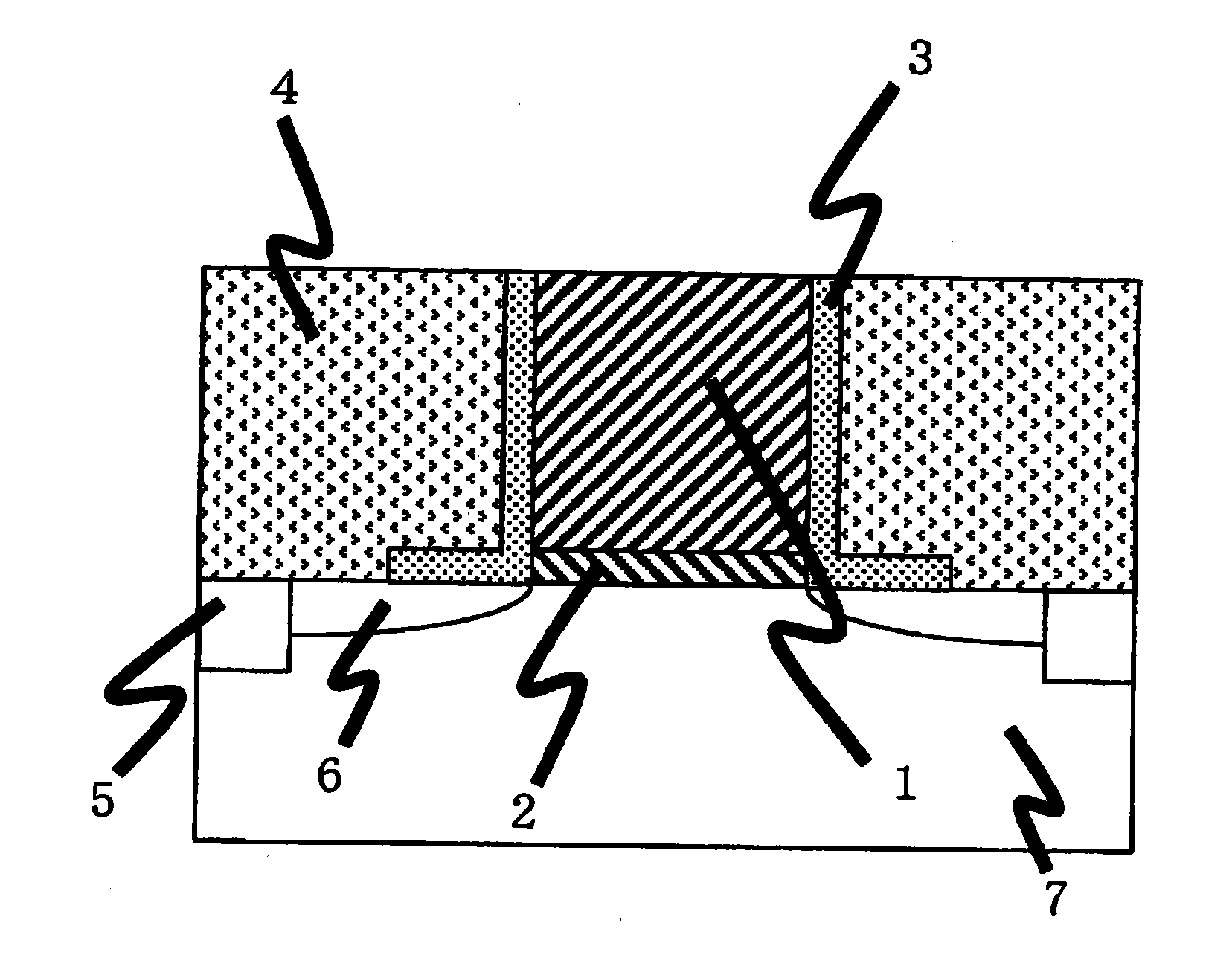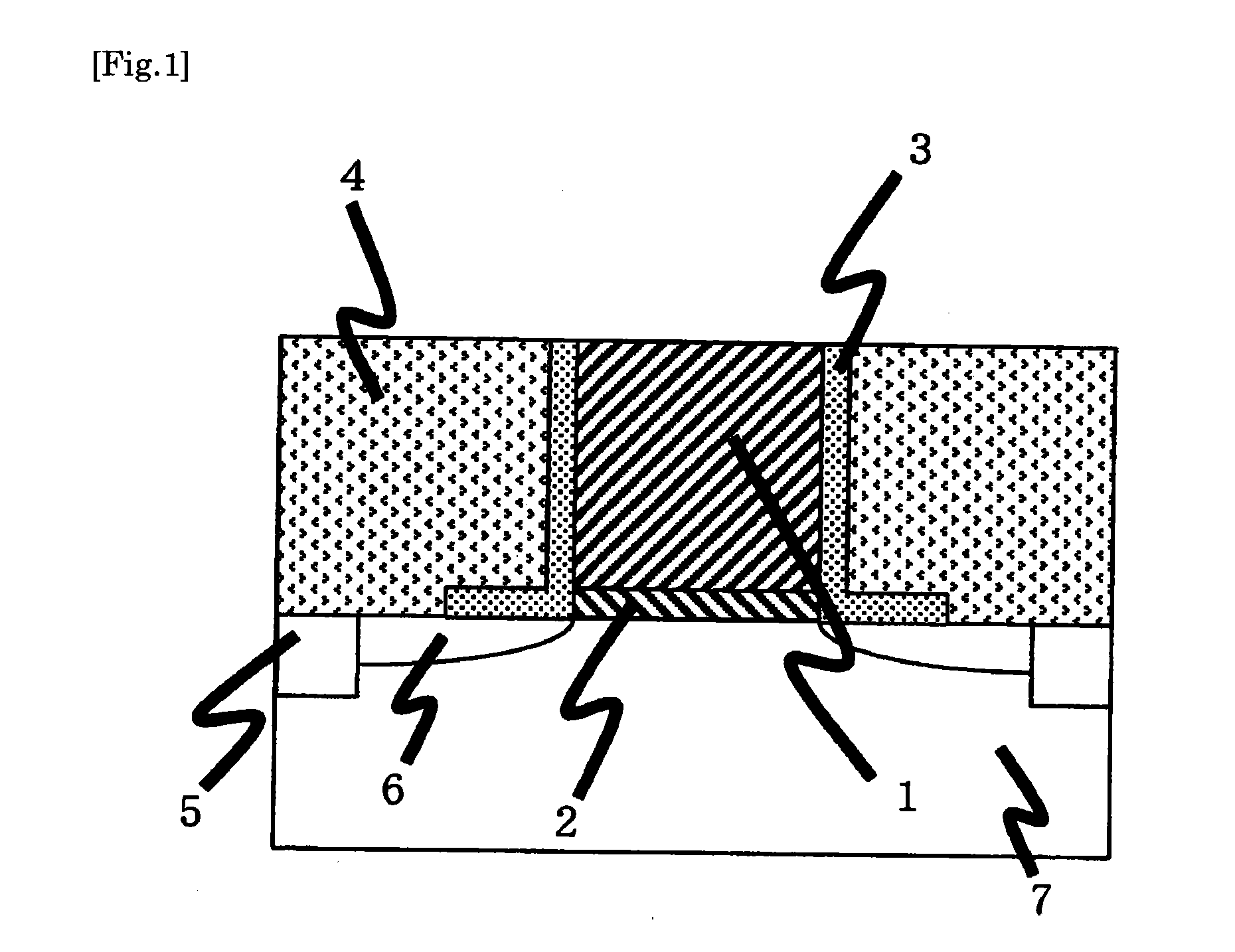Silicon etchant and method for producing transistor by using same
a technology of silicon etchant and etchant, which is applied in the direction of electrical equipment, semiconductor devices, chemistry apparatus and processes, etc., can solve the problems of large power consumption, increased leakage current owing to tunnel current, excessively small oxidation, etc., and achieves selective removal of silicon, high quality, and high precision
- Summary
- Abstract
- Description
- Claims
- Application Information
AI Technical Summary
Benefits of technology
Problems solved by technology
Method used
Image
Examples
examples
[0056]The present invention will be described in more detail below by referring to the following examples. It should be noted, however, that the following examples are only illustrative and not intended to limit the invention thereto.
Evaluation Method
Measuring Equipments:
[0057]Fluorescent X-ray analysis: Measured using “SEA1200VX” available from SII Nano Technology Inc.
[0058]SEM observation: Observed using an ultrahigh resolution field emission type scanning electron microscope “S-5500” available from Hitachi Hi-Technologies Corp.
[0059]FIB Fabrication: Fabricated using a focused ion beam fabrication device “FB-2100” available from Hitachi Hi-Technologies Corp.
[0060]STEM Observation: Observed using a scanning transmission electron microscope “HD-2300” available from Hitachi Hi-Technologies Corp.
Determination:
(Etching Condition of Dummy Gate 1 Made of Silicon)
[0061]◯: Dummy Gate 1 was completely etched.
[0062]X: Dummy Gate 1 was insufficiently etched.
(Evaluation of Corrosion Resistance...
examples 1 to 48
[0065]In order to examine a corrosion resistance of the etching solution to aluminum, the following procedure was used. That is, a 1000 Å-thick aluminum film was deposited on a silicon wafer as a substrate by PVD. The aluminum film thus deposited on the substrate was immersed in the etching solution shown in Table 2 at 25° C. for 30 min, and the thickness of the aluminum film before and after the immersion was measured by a fluorescent X-ray analyzer to calculate an amount of the aluminum film etched with the etching solution. Further, an etch rate of aluminum was calculated from the amount of the aluminum film etched and the immersion time. When the etch rate of aluminum is less than 1 nm / min, it was determined that the etching solution had a corrosion resistance to aluminum.
[0066]Next, testing methods for a silicon etching capability of the etching solution and a corrosion resistance thereof to the high dielectric material film, side wall and interlayer insulating film are explain...
PUM
| Property | Measurement | Unit |
|---|---|---|
| dielectric | aaaaa | aaaaa |
| weight | aaaaa | aaaaa |
| length | aaaaa | aaaaa |
Abstract
Description
Claims
Application Information
 Login to View More
Login to View More - R&D
- Intellectual Property
- Life Sciences
- Materials
- Tech Scout
- Unparalleled Data Quality
- Higher Quality Content
- 60% Fewer Hallucinations
Browse by: Latest US Patents, China's latest patents, Technical Efficacy Thesaurus, Application Domain, Technology Topic, Popular Technical Reports.
© 2025 PatSnap. All rights reserved.Legal|Privacy policy|Modern Slavery Act Transparency Statement|Sitemap|About US| Contact US: help@patsnap.com


